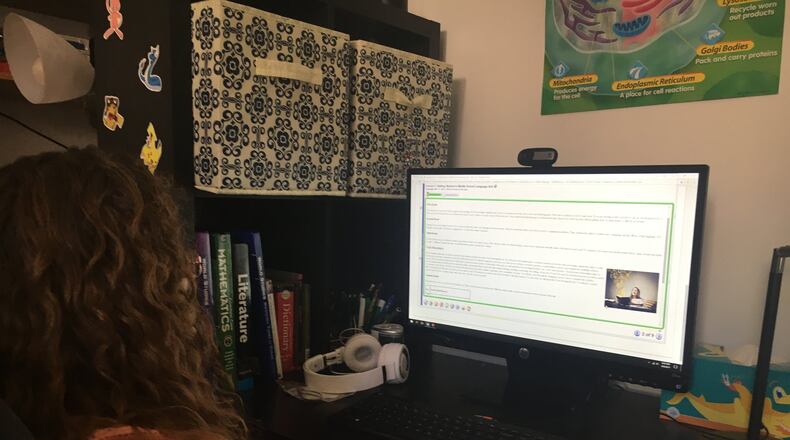With the coronavirus outbreak closing school buildings, most Ohio K-12 students and teachers are getting a crash course in e-schooling this spring.
ALL IN ONE SPOT: Coronavirus main page has links to dozens of stories
Jason Swineheart, principal at the Great River Connections online school, encouraged students and parents to be patient in these first weeks.
“Even if kids seem ready and prepared, it takes time to adjust,” said Swineheart, who also spent four years as an assistant principal at Ohio Connections Academy. “It’s not going to be like just flipping a switch where the first day they’re doing it, everything’s going to be perfect.”
Swineheart said setting up a schedule and a dedicated workspace away from distractions, if possible, helps students succeed at home. He said there’s flexibility in how you schedule your day — what works for one family may not work for another — but there are some good guidelines.
“Schedule a day where they’re working on something for 15 or 30 minutes, then they’re taking a break, and then they’re back at it for 30 minutes,” he said. “So it doesn’t feel like you have to sit at home and go to school from 7 a.m. to 3 p.m. … Breaking up the day helps to break up the monotony (of working more alone).”
RELATED: Virtual lunches, canceled proms and Zoom; local schools adjust
Shannon Cox, superintendent of the Montgomery County Educational Service Center, said it’s important for parents to remember they don’t have to shoulder a huge burden — that their schools are still leading the way.
“The first thing we need to make certain every parent understands is we are not asking you to be the teacher,” Cox said. “We are not asking you to create the curriculum … Your role is just to help your district help your child’s learning continue.”
The Ohio Department of Education put out a 26-page Remote Learning Resource Guide this week. Echoing Swineheart, ODE said students “should not try to replicate a traditional school day.”
The state document advised schools to carefully address equity or fairness issues — whether students have sufficient online access, which students have less support or major stressors at home, and how special education students’ service needs can be met remotely.
RELATED: High school seniors struggle with loss of milestone events
ODE’s guide also lists dozens of extra online resources for both educators and families, divided by topic area, from basics like English and math, to subjects like fine arts, computer science and world languages.
Connections Academy, the parent organization of Swineheart’s school, put out a “tips for success” summary for all families adjusting to online learning. The group urges parents to focus on students’ well-being first, saying they’ll learn better once they feel calm, safe and secure.
Some other high points of their plan include understanding the teacher’s expectations and how they’ll communicate; building reasonable schedules and to-do lists, including time for any planned live lessons; and doing brief end-of-day reviews where students can explain or show what they did and learned.
Swineheart said student-teacher communication is important, and it needs to be clear, concise and consistent so students know when and where to expect it.
RELATED: Governor assures hospitals that help is on the way
He encouraged teachers making the adjustment to online education to be creative — working activities around the house into lessons and finding online ways for students to continue interacting with their classroom peers. He said teachers can’t keep things totally the same.
“Find some of the big highlights you want your students to take away and really focus on those in a creative way, as opposed to thinking that you’re going to be able to teach every little piece of the curriculum that you were supposed to get through the rest of the year,” Swineheart said.
About the Author

